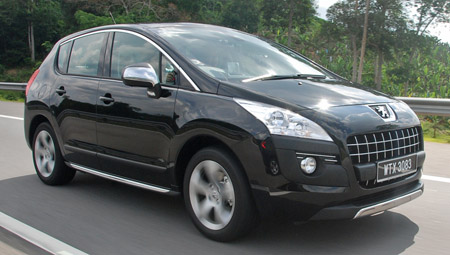
Local Peugeot distributor Nasim Sdn Bhd is among the busiest car companies in 2010, with a few new models up their sleeves. An MPV is on its way; the RCZ should make it here by the end of this year and a “207 Sedan” codenamed T33 is scheduled for a Q3 debut. But for now, the 3008 is the latest lion badged car to hit our market, a mid-sized crossover/SUV type of vehicle pitched against the popular Honda CR-V (Peugeot prefers the SUV term for our market, as it’s more widely used).
To be launched this coming Monday (June 7), the 3008 should be able to make some CR-V prospects think twice before committing, as it gives the Honda a proper trashing on paper, both in terms of technical spec and equipment count. The actual price will be revealed at the launch, but we understand that it’s around RM150K, right smack in CR-V territory.
UPDATE: The 3008 is now officially priced at RM143,888 OTR with insurance, with an extra RM1,500 premium if you pick the Pearl White body paint.
We’ve already driven it, and our impressions are after the jump.
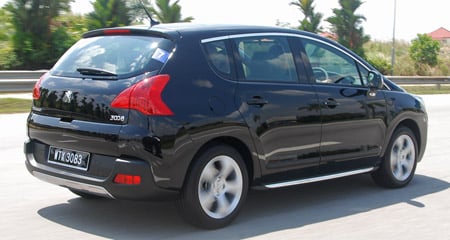
The 3008 is yet another model spawned from PSA’s Platform 2 that also underpins among others, the 308 family, the RCZ, 5008 MPV and the Citroen C4 range. The double zero in the name represents an extension of the classic Peugeot range, a new type of vehicle beyond the traditional supermini, C-segment hatchback and D-segment saloon types.
Upon first glance, the 3008 appears compact and less chunky than a CR-V. It’s actually 200 mm shorter than the Honda and lower too, but the Peugeot’s 2,613 mm wheelbase is just a fraction short of the CR-V’s 2,620 mm. The 3008’s footprint actually sits in the middle of the 308 hatchback and the seven-seater 308 SW. Think of it as a higher riding 308 with more space and a bigger boot and you’re not far off.
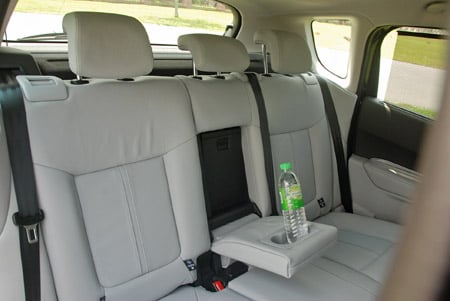
With three journos to a car, I started off the media preview drive seated at the back. Compared to the same seat in the 308, the ambience here is much more airy and pleasant, thanks to the taller roof, higher ride height and light interior colour (our tester had grey leather seats). Legroom is not as extensive as the CR-V, but more than adequate for this 175 cm writer, and there’s good space under the front seats to tuck feet under (in fact, I got more comfortable here than in a recently tested big luxury saloon).
There are also retractable blinds for the rear windows. The seats are of the firmer variety, which is not an issue, but the rear bench could be more sculptured. Similarly, the cupholders in the fold down armrest could go deeper.
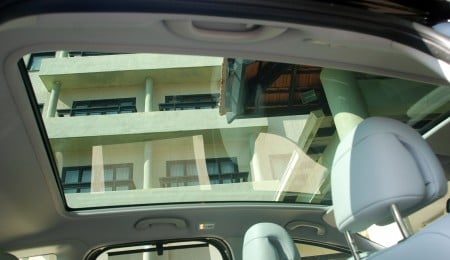
It was a cloudy day, so we took the opportunity to open up the panoramic glass roof for some natural light. Peugeot says it measures 17 square feet, but all you need to know that it’s seriously huge and in one piece, without any bar connecting the B-pillars. Like in the 308 Turbo, this will be one of the star features of the 3008.
Another highlighted feature is the Multiflex interior. This consists of a boot floor that can be set to three different positions, flat folding rear seats and folding front passenger backrest. This means a flat floor from the tailgate to the dashboard, which is 2.62 metres long – very useful for trips to the home improvement store. With all seats in place, the 512-litre boot is large, well shaped and easy to access with a low lip height. This is thanks to the split tailgate; the upper part swings up like any hatchback while the lower section flips down like in pick-up trucks. The latter can withstand 200 kg evenly spread, so go ahead and use it as a bench! There’s also a built in torchlight that auto charges when you dock it.
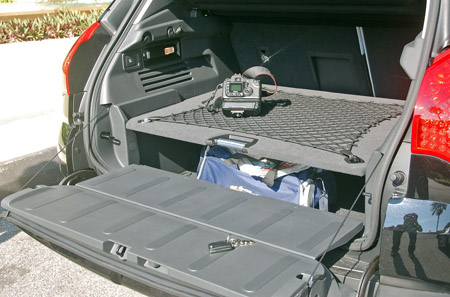
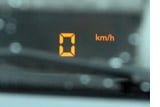 All very useful, but one of my favorite parts of the 3008 is the cockpit. Now, the word “cockpit” is often used by road testers to refer to the driver’s area, but Peugeot actually calls the 3008’s aviation inspired driver area a cockpit. Backing this notion are a row of toggle switches below the central air vents, a high centre console and a head up display (HUD) in the driver’s line of vision. Displaying speed and cruise control status, the data isn’t projected on the windscreen like on some other systems, but on a transparent panel that’s retractable. Brightness and height can be adjusted. This is another star feature that’s bound to impress many at showrooms.
All very useful, but one of my favorite parts of the 3008 is the cockpit. Now, the word “cockpit” is often used by road testers to refer to the driver’s area, but Peugeot actually calls the 3008’s aviation inspired driver area a cockpit. Backing this notion are a row of toggle switches below the central air vents, a high centre console and a head up display (HUD) in the driver’s line of vision. Displaying speed and cruise control status, the data isn’t projected on the windscreen like on some other systems, but on a transparent panel that’s retractable. Brightness and height can be adjusted. This is another star feature that’s bound to impress many at showrooms.
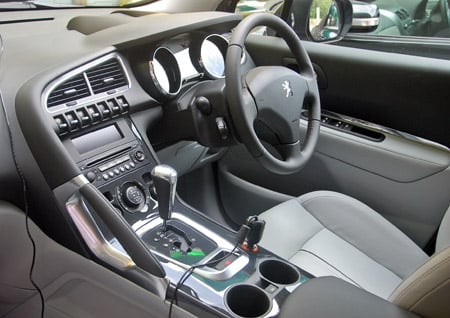
For me, the cabins of recent Peugeots have been brilliant, both in design and quality, and the 3008 follows form. It’s probably a good thing that the dash architecture doesn’t share the generic “308 style” (too much of a good thing can be boring) instead going down the driver focussed route with all controls “wrapped” around him/her. The high and wide centre console effectively cordons off the driver, which is left with a powerful feeling and cozy workspace, not unlike that in sports cars. The leather lined grab handle for the front passenger may see little use, but it looks cool.
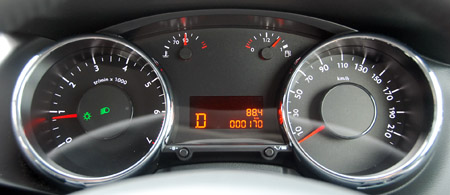
Also nice are the simple dial markings, black (more like very dark grey) inserts and just the right amount of brightwork. For the driving position, you can choose from car-like low slung or SUV high perch, but I found everything to be slightly skewed to the left. My left knee was perpetually in union with the centre console while there were plenty of room on the right. Bear in mind though that ergonomics vary between people; what’s awkward to me might me perfectly acceptable to you, vice versa.
Throughout the drive, I also noticed poor off the shoulder rear vision and a cumbersome to use cruise control stalk; the latter is completely unsighted behind the steering wheel so I fumbled and guessed my way around. Of course, it won’t be a problem once you’ve learned the system. Another “wow” gadget is the electronic parking brake, which works as intended and saves space.
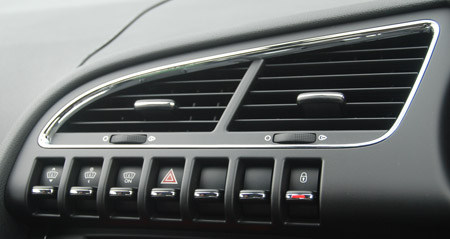
Peugeot mentions MPV versatility, so let’s look at storage ideas. If the first thing you discover is the super small glove box (despite its large opening) don’t worry, you’re compensated with a very, very deep 13.5-litre storage box between the front seats, wide door compartments and another cubby below the steering wheel. But with both cupholders utilised, I hoped for more small cubbies to hold my keys/wallet/mobile. Perhaps Peugeot forgot to convert, but the cover of the centre box opened to the right (to the driver) which is an oversight for right-hand drive cars.
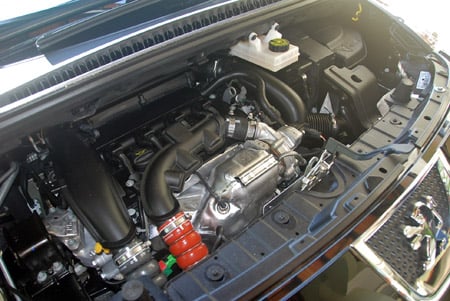
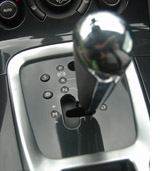 The 3008 is powered by the THP 156 engine, a member of the modern Prince engine family. With twin-scroll turbocharging and direct injection, it produces 156 bhp and 240 Nm of torque from just 1.6 litres. While there’s 16 horses more than the 308 Turbo here, the 3008 feels less forceful than the hatchback, which is expected as it’s is a larger and heavier vehicle.
The 3008 is powered by the THP 156 engine, a member of the modern Prince engine family. With twin-scroll turbocharging and direct injection, it produces 156 bhp and 240 Nm of torque from just 1.6 litres. While there’s 16 horses more than the 308 Turbo here, the 3008 feels less forceful than the hatchback, which is expected as it’s is a larger and heavier vehicle.
On its own, few will complain about lack of pace and getting up to highway speeds is quite effortless. There’s a little bit of boominess from 4,500-6,000 rpm, but our test car had a factory tight engine with only 40 km on the clock. Road roar and wind noise are well isolated from the cabin, even at speeds way beyond the national limit.
The more significant drivetrain partner here is the new AT6 six-speed automatic gearbox, which sends the previous four-speed unit to the history books for good, throughout the range. From now, there won’t be good Peugeots handicapped by poor auto boxes anymore, because this co-developed with Aisin unit shifts smooth, fast and most importantly smart. This drivetrain pairing is the exact same combo that will go into the entry level RCZ.
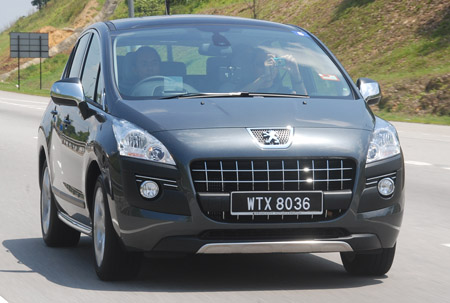
Dynamic Roll Control is a system that combats excessive roll when cornering. Not as complicated as Adaptive Drive in the BMW X5, DRC is essentially a passive hydraulic system with a central module connecting the two rear shock absorbers. Built into the rear crossmember, this module consists of a floating piston and hydraulic compensation reservoir. Pressure is 20 bar.
And it works. The 3008 feels agile on winding roads, and corners very flat for an SUV. The light steering (hydraulic, not EPS) is accurate and quick, while the low rolling resistance 225/50 R17 Michelins offer good grip and wet handling (it was pouring in parts during our test drive). Push really hard and the front will gradually wash wide, but lift off and it’ll tuck back neatly – safe and drama free. The 3008’s handling ability is certainly more than what a typical SUV driver would need, but the high speed ride over the more undulating highways stretches could be a wee bit more settled. A pleasant drive overall.
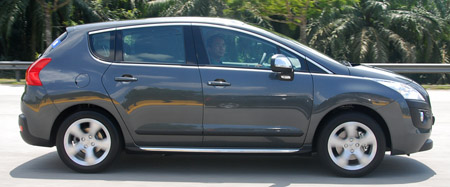
When it comes to equipment, one can expect a Nasim new model to be filled to the brim, and the 3008 obliges. Besides the abovementioned highlights (glass roof, HUD, DRC), this Peugeot SUV comes with six airbags, ESP, ABS/EBD/Brake Assist, auto headlights/wipers and leather. Being a French car, the 3008 is also five-star Euro NCAP rated.
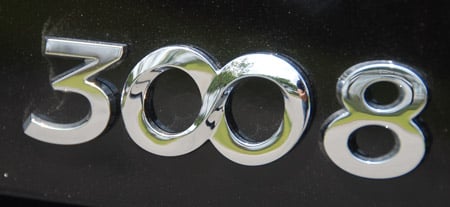
Considering what you get, the 3008 is good value if the indicated RM150K price holds true. The first 100 units are fully imported CBU from France, before local assembly starts in Gurun.
[zenphotopress number=999 album=1171]
Looking to sell your car? Sell it with Carro.










AI-generated Summary ✨
Comments express mixed feelings about the Peugeot 3008 test drive review. Many enthusiasts praise the car’s stylish design, feature-packed interior, and impressive performance, comparing it favorably to other SUVs like the Honda CR-V and Hyundai Tucson. Several users highlight the car’s solid build quality, advanced features such as HUD, and enjoyable driving experience. However, some critics mention concerns about the car's appearance being less aggressive, limited space for rear passengers, and questions about after-sales service and maintenance costs. Resale value remains a concern for many. Overall, the comments reflect excitement about the Peugeot 3008’s qualities but also caution regarding affordability, local service support, and long-term reliability.